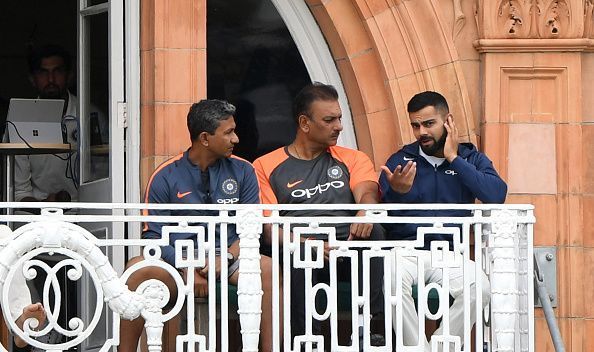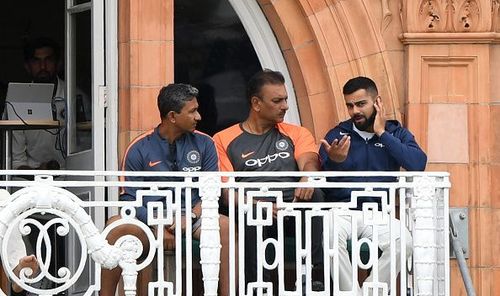
It’s do-or-die at Trent Bridge, India likely to come with full strength

When India started their tour to England, many cricketing pundits rated India to win the Test series and believed this team led by Virat Kohli can repeat the feat of 2007 when Rahul Dravid captained the side. After refusing to play a few practice matches before the first test, India started as favourites in the first test at Edgbaston.
Barring Virat Kohli’s crucial 150 in the first innings and a half-century in the second, the entire batting unit failed miserably. The Indian bowlers created ample amount of chances to come back into the match but eventually lost it by 31 runs. The margin of defeat gave an impression that the rest of the test series is going to be a closely contested affair.
The fragility of Indian batsmen to play the moving ball was well read by English seamers. As a result, when India went to play the 2nd test at the Lord’s, the English bowlers came with a clear game-plan and unfortunately Virat Kohli’s bat remained silent in both the innings with scores of 23 and 17. India lost the game by an innings and 159 runs.
Also, Virat Kohli was responsible for making a serious misjudgment in reading the pitch and opting to play 2 spinners which completely backfired. Both Ashwin and Kuldeep were under-bowled in the second test and they failed to take any wickets.
Now India is left with a do-or-die situation at the Trent Bridge. Apart from the skipper, none of the batsmen even came close to scoring a 50 in their last four innings of the series. This is worrisome as most of the batsmen in the line-up have exposure to playing in English conditions. Pakistan skipper Sarfaraz Ahmed in his last tour of England in 2016 levelled the 4 match series 2-2 and believes getting accustomed to conditions is the key to succeed in England.
If India happens to win the series from here, it will be their ‘Rising from the Ashes Moment,’ something very similar to what Brian Lara did to the touring Australians in 1999. After losing the first test by 312 runs, Brian Lara almost singlehandedly massacred the Australians by scoring centuries in next 3 matches and level the series 2-2. Virat Kohli played a similar role in the first test, failed in the second and now it’s time to get things right in the third.
In all probability, Jasprit Bumrah will be deemed match fit to make it to the playing eleven. India must consider omitting Kuldeep Yadav ahead of R Ashwin in the spin department. Amongst the seamers, Shami and Ishant who have bowled exceptionally well in the series so far must complement Bumrah to form the unit of 3 pacers and 1 spinner. So far Hardik Pandya has proved more than handy to shoulder the responsibility of the fifth bowler and we all know on his day he could be disdainful with the bat as well.
Trent Bridge as a venue has always been conducive for seam bowling. Over the years, the vicinity of the stadium has undergone a number of developments and now it is completely surrounded by tall buildings. These developments don’t leave any scope of cutting the breeze and as a result, there has been a noticeable increase in the swing. So India needs to rightly stick to the format of 3 seamers and 1 spinner for the third test.
Another series-defining moment would completely depend on Virat Kohli’s availability in the third Test. The Indian skipper dealt with a back injury in the second test which saw him sitting in the dressing room during England’s innings at Lord’s. Although, Kohli said, ’Confident I will be fine in a few days,’ it remains to be seen if he appears in the line-up on Saturday. If not, the Indian team management would pin their hopes on Ajinkya Rahane to lead the side and repeat the same feat he achieved against Australia in the deciding test match of the home series in 2017.
As the bowling unit looks sorted, the acid test for India would be to get their batting in place. After repeated failures, it’s natural for players to lose their confidence. It’s little late for India to ask for practice matches at this juncture of the tour. In such a scenario, the team management must ensure the boys don’t play with any kind of mental blocks.
If pep talks don’t work, the management should seek performance counselling to help the boys identify their areas of weaknesses and then formulate strategies to improve the performance. It may come as a surprise to a lot of people but the Indian Blind Cricket team has achieved tremendous success under Patrick Rajkumar, a political science professor who specializes in performance counselling. Before taking up the assignment with the Blind team, he served as a life skills coach and even trained counsellors who work with youth groups. Under him, the Indian Blind Cricket team has won the T20 world cup, the Asia Cup and the ODI World Cup.
How is India going to counter-attack the moving ball from Broad and Anderson? Which Indian players are going to make it to the final eleven? A lot of intriguing questions will be answered at the beginning of the third test at Trent Bridge.